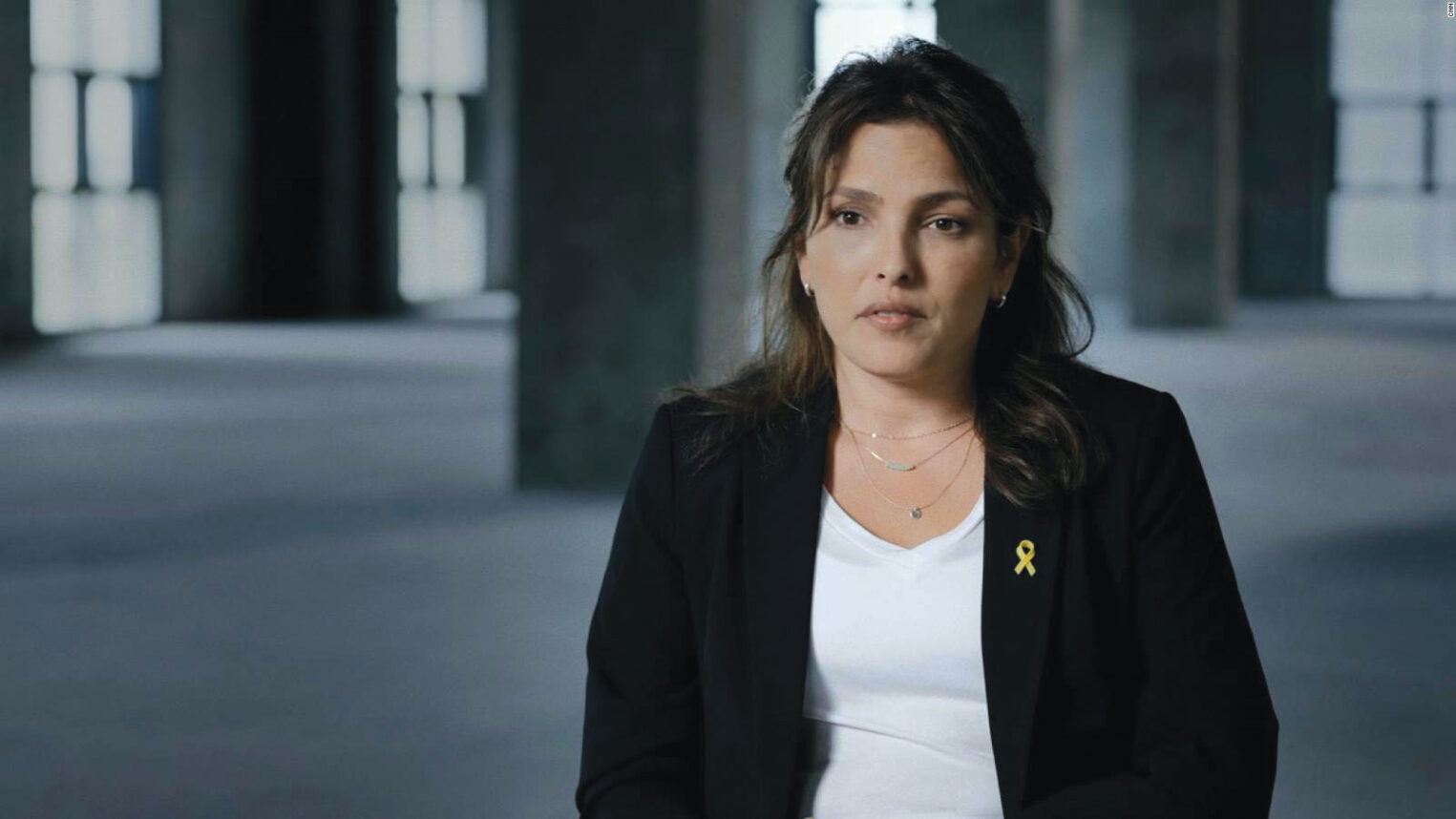“How does one commemorate 5.7 million dead?” Israeli historian Yehuda Bauer asked the audience gathered in Pan Pacific Park for Los Angeles’ annual community Yom HaShoah commemoration on April 22. “You can’t, really. How does one avoid the clichés, in saying things that everybody expects you to say?”
With a slight hunch in his shoulders and a faint British accent to his English, Bauer spoke to a crowd of 600, a much smaller number than in previous years, in a tent erected near the year-old home of the Los Angeles Museum of the Holocaust (LAMOTH), which for the first time acted as the event’s sponsor and organizer. Born in Prague in 1926, Bauer moved to Israel with his family in 1939 and is a professor emeritus at the Hebrew University in Jerusalem. In 1998, he won the Israel Prize, the country’s highest honor, for his work on Jewish history and the history of the Holocaust.
His speech came near the end of the 90-minute event, before Theodore Bikel sang a short song, a cappella, but after Los Angeles Mayor Antonio Villaraigosa quoted Elie Wiesel and Anne Frank. More than one speaker referred to the Shoah as the “greatest crime in the history of the world.”
A few speakers drew links between the Holocaust and current events. David Siegel, the Consul General of Israel in Los Angeles, mentioned in his remarks that Iran’s leaders “openly deny and mock the Holocaust.” Mark Rothman, LAMOTH’s director, suggested that the recent killings of two unarmed African-American teenagers — Trayvon Martin in Florida and Kendrec McDade in Pasadena — made him realize that parents of young black men in America today must often feel their children are being hunted, “just as Jews in Europe felt every day between 1933 and 1945.”
The challenge of how to recount the history of the Holocaust is ever-present, and more than a few speakers remarked that in just a few years no survivors will be alive to tell the story from the first-person point of view.
Many of their stories have already been recorded in various formats, and last Sunday, visitors to LAMOTH got an early look at a brand-new way of presenting them. The “Tree of Testimony” is an installation of 70 video screens sharing survivors’ testimonies from the USC Shoah Foundation Institute’s archive. More than 52,000 individual testimonies will run at the museum in a continuous loop; the cycle will take a full year to complete its run.
“I wanted something in the museum that was more of an aesthetic experience,” E. Randol Schoenberg, LAMOTH’s board president, said. While some might simply stand back and watch the silently streaming testimonies, visitors can, using the museum’s iPod-based guide system, key in the number of a screen and listen to one individual tell his or her story.
But on Sunday, it was Bauer’s stories of two Polish Jewish boys who survived the Holocaust that evoked the strongest emotional responses.
One of the boys, nicknamed Machek, was raised by a Polish woman, who after the war gave him up for adoption to a Jewish orphanage. The orphanage moved him and the other children to Israel, and later, just before she died, the Polish woman wrote him a letter telling him that if he wanted to know his true identity, he should visit a particular lawyer in Jerusalem. The boy, who had grown up to become a truck driver, went to the lawyer’s office, introduced himself and asked the man to kindly tell him what he knew.
The lawyer yelled at him. “You want my money!” Bauer said. “You want to blackmail me. Get out or I’ll call the police!”
“Machek, to this day, doesn’t know who he is,” Bauer said, “Is that typical of Holocaust survivors? No. But is anything typical of Holocaust survivors?”
Bauer’s second story was about a boy named Yankele who worked as a carpenter’s apprentice during the war, building coffins for German soldiers. He went on to become a Jewish partisan, and when one of his compatriots, a Polish partisan named Ivan, died, Yankele built a coffin for him and conducted a ceremony, reading, in Russian, from the New Testament.
Every Holocaust story is unique, Bauer said.
“They are all the same, and they are all totally different one from another,” Bauer said in conclusion. “They are a story of a people, and they are the story of our people, and I hope I haven’t said a single cliché.”






















 More news and opinions than at a Shabbat dinner, right in your inbox.
More news and opinions than at a Shabbat dinner, right in your inbox.